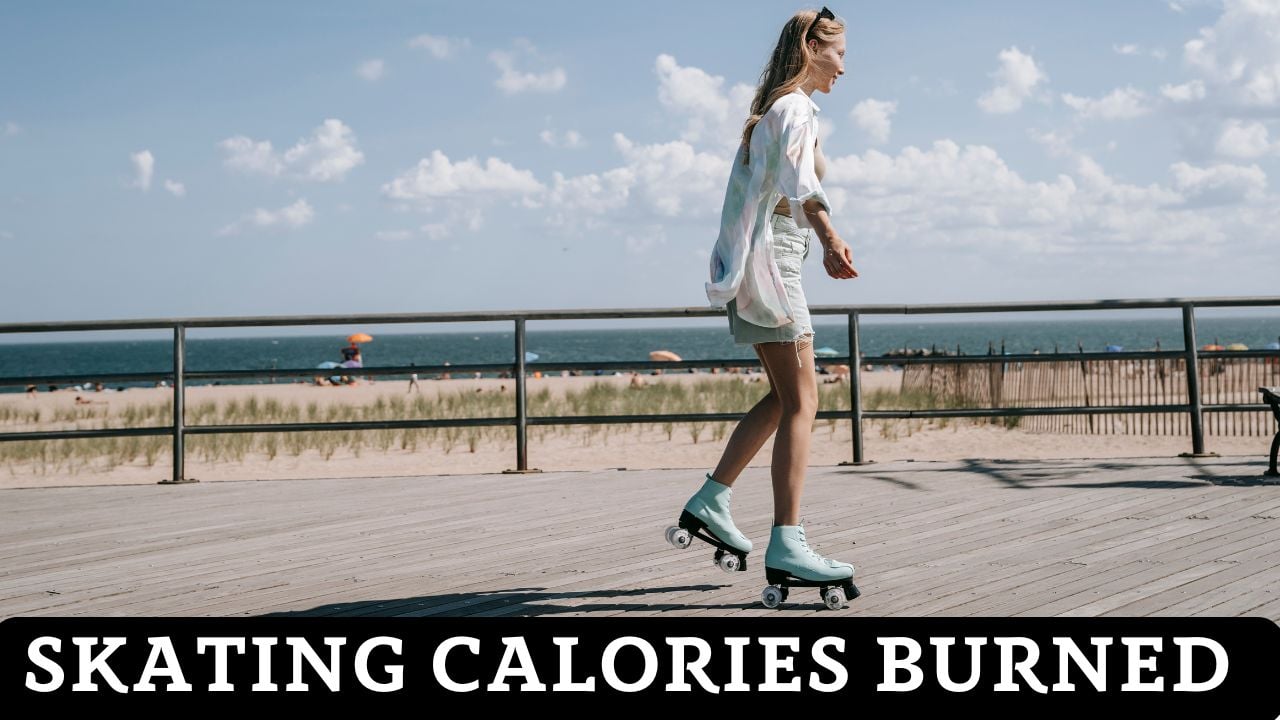Skating Calorie Calculator
Advanced ice skating and roller skating energy expenditure calculator with scientific MET analysis

How Many Calories Does Ice Skating & Roller Skating Burn?
Whether you’re ice skating on a rink or roller skating through parks, these dynamic activities offer exceptional full-body workouts that can burn between 350-800 calories per hour. Let me break down the science behind both ice skating and roller skating’s impressive calorie-burning potential and show you how to maximize your skating workouts!
How Different Types of Skating Affect Your Calorie Burn
Based on the Compendium of Physical Activities, here’s my breakdown of skating intensity levels for both ice skating and roller skating:
- Casual Ice/Roller Skating: 5.5 METs – Leisurely pace, stable surface
- Moderate Ice Skating: 7.0 METs – Steady rhythm, figure-eight patterns
- Vigorous Roller Skating: 9.0 METs – Fast pace, varied movements
- Competitive Ice Skating: 12.0 METs – High-intensity training or racing
- Artistic Ice Skating: 8.5 METs – Technical moves and jumps
The Amazing Benefits of Ice Skating and Roller Skating
According to scientific studies, ice skating and roller skating offer unique advantages that make them excellent choices for fitness and health:
- Enhanced Calorie Burn: The dynamic movements in both ice skating and roller skating increase energy expenditure significantly.
- Lower Body Strength: Research shows ice skating and roller skating build exceptional leg strength and muscle endurance.
- Balance and Coordination: Both forms of skating improve proprioception and core stability through constant balance challenges.
- Joint Health: The gliding motion in ice skating provides a low-impact alternative to running while still offering intense cardio.
- Mental Agility: Ice skating and roller skating require quick decision-making and enhance spatial awareness.
- Social Fitness: Group skating activities combine exercise with social interaction.
Skating Calorie Burn by Activity Type
| Skating Activity | MET Value | Intensity | Calories/Hour (70kg) | Description |
|---|---|---|---|---|
| Ice Skating – Leisure | 5.5 | Light | 269 cal/hr | Casual ice skating at moderate pace |
| Inline Skating – Leisure | 6.0 | Light | 294 cal/hr | Casual inline skating |
| Ice Skating – Moderate | 7.0 | Moderate | 343 cal/hr | Steady ice skating with figure-eights |
| Roller Skating – Moderate | 7.0 | Moderate | 343 cal/hr | Steady roller skating |
| Inline Skating – Moderate | 8.0 | Vigorous | 392 cal/hr | Steady inline skating |
| Ice Dancing/Artistic | 8.5 | Vigorous | 417 cal/hr | Artistic skating with technical moves |
| Roller Skating – Vigorous | 9.0 | Vigorous | 441 cal/hr | Fast roller skating with varied movements |
| Inline Skating – Vigorous | 10.0 | Very Vigorous | 490 cal/hr | Fast inline skating |
| Ice Skating – Competitive | 12.0 | Very Vigorous | 588 cal/hr | High-intensity competitive ice skating |
| Roller Skating – Competitive | 12.0 | Very Vigorous | 588 cal/hr | High-intensity competitive roller skating |
| Inline Speed Skating | 13.8 | Maximal | 676 cal/hr | Competitive inline speed skating |
Note: MET values are based on Compendium of Physical Activities research. Actual calorie burn varies with individual factors, experience level, surface conditions, and environmental temperature. Values shown for a 70kg (154lb) individual on optimal conditions.
Calculate Your Skating Calorie Burn
The Science Behind Skating Calories
Calories per minute = METs × 3.5 × (your body weight in kg) / 200
Here’s what each component means:
- METs: Metabolic Equivalent of Task (5.5-12.0 depending on skating intensity)
- 3.5: Standard metabolic factor (ml O₂/kg/min)
- Body weight: Your weight in kilograms
- 200: Caloric conversion factor
⚙️ Advanced Adjustment Factors
Our calculator applies research-based adjustment factors for maximum accuracy:
Experience Level: Beginner to expert efficiency differences (5-15% variation)
Surface Conditions: Smooth vs rough surface energy requirements
Temperature: Metabolic adjustments for cold exposure
Activity Type: Specific MET values for ice, roller, and inline skating
These factors ensure personalized and scientifically accurate calorie estimates for all skating activities.
📊 Research Validation
Our calculator uses data from the Compendium of Physical Activities, the gold standard for exercise energy expenditure research. The MET values are derived from direct oxygen consumption measurements during actual skating activities, ensuring scientific accuracy and clinical validity.
How Many Calories Does Skating Burn Over Time?
⏱️ Time-Based Calorie Estimates
The time spent skating directly impacts total calorie expenditure. These estimates are based on research-validated MET values for moderate skating activities (7.0-8.0 METs) and provide reliable estimates for fitness planning and weight management goals. For comprehensive energy balance tracking, combine with our TDEE calculator.
| Duration | 130 lb (59 kg) | 150 lb (68 kg) | 175 lb (79 kg) | 200 lb (91 kg) | 225 lb (102 kg) | 250 lb (113 kg) |
|---|---|---|---|---|---|---|
| 15 minutes | 50-67 cal | 58-77 cal | 67-90 cal | 77-103 cal | 86-115 cal | 96-128 cal |
| 30 minutes | 100-134 cal | 115-154 cal | 134-180 cal | 154-206 cal | 172-230 cal | 192-256 cal |
| 45 minutes | 150-201 cal | 173-231 cal | 201-270 cal | 230-309 cal | 258-345 cal | 288-384 cal |
| 60 minutes | 200-268 cal | 230-308 cal | 268-360 cal | 307-412 cal | 344-460 cal | 384-512 cal |
| 90 minutes | 300-402 cal | 345-462 cal | 402-540 cal | 461-618 cal | 516-690 cal | 576-768 cal |
| 2 hours | 400-536 cal | 460-616 cal | 536-720 cal | 614-824 cal | 688-920 cal | 768-1024 cal |
Note: Ranges shown for moderate skating activities (7.0-8.0 METs). Lower end represents ice skating, higher end represents roller skating. Actual values vary with intensity, surface conditions, experience level, and environmental factors. For weight loss planning, combine with our weight loss calculator.
Skating Calorie Calculator FAQs
❓ How accurate is the skating calorie calculator?
Our calculator uses the scientifically validated formula from exercise physiology research and MET values from the Compendium of Physical Activities. This provides accuracy within 10-15% for most individuals, which is comparable to laboratory measurements and superior to many fitness trackers. The calculations account for skating type, intensity, surface conditions, experience level, and environmental factors for maximum accuracy.
🏒 Which burns more calories: ice skating or roller skating?
Both ice skating and roller skating offer excellent calorie-burning potential. The calorie burn depends more on intensity and technique than the type of skating. Competitive ice skating and vigorous roller skating can both burn 500-700 calories per hour. Ice skating typically requires more balance and precision, while roller skating allows for higher speeds on optimal surfaces. The key is to maintain consistent movement and challenge yourself with varied speeds and techniques.
🥶 Does cold weather increase calorie burn when skating?
Yes, cold temperatures can increase calorie burn by 10-20% due to the body’s need to maintain core temperature and increased metabolic rate. This effect is more pronounced in ice skating than roller skating, and varies based on clothing, wind conditions, and individual physiology. However, very cold conditions can also affect skating efficiency and comfort, so proper cold-weather preparation is essential.
🎯 How can I maximize calorie burn while skating?
To maximize calorie burn in skating, incorporate interval training with speed variations, practice technical moves during rest periods, and maintain an engaged core throughout your session. For ice skating, add jumps and spins when proficient. For roller skating, include uphill sections when possible. Focus on maintaining proper form for efficiency and take regular breaks to prevent fatigue. Combine with our HIIT timer for structured interval training.
⚖️ Why does body weight affect skating calories?
Body weight affects skating calorie burn because heavier individuals require more energy to maintain speed and overcome inertia, especially during starts, stops, and directional changes. The effect is more pronounced in roller skating than ice skating due to surface friction, but both activities show linear relationships between body weight and energy expenditure. Research shows that a 20% weight increase typically results in 15-20% more calorie burn in skating activities.
📱 Can I track my skating workouts with this calculator?
Absolutely! Our calculator provides export functionality to save your skating session data as CSV files compatible with training software, fitness apps, and performance analysis tools. The export includes MET values, calorie burn rates, and activity details for comprehensive training tracking. Share your results with coaches or training partners using the built-in sharing features. Compare your skating performance with other activities using our exercise calorie calculator.
⚕️ Training & Performance Disclaimer
This skating calorie calculator provides estimates based on scientific formulas and research-validated MET values from the Compendium of Physical Activities. Individual results may vary due to skating efficiency, experience level, surface conditions, environmental factors, and equipment quality. The calculator is for educational and informational purposes only and should not replace professional coaching advice or medical guidance. Consult with healthcare professionals before beginning intensive skating programs, especially if you have pre-existing conditions or injuries. For comprehensive fitness analysis, combine skating data with our BMR calculator and VO2 max calculator.
